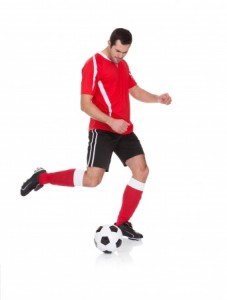Understanding the differences between Sports Hernia, Inguinal Hernia and APS
 Athletic pubalgia syndrome, APS, is also known as a sports hernia. While the terms are used interchangeably, sports hernia is the more common of the two. APS, or sports hernia, results from the lower abdominal muscles or tendons weakening.
Athletic pubalgia syndrome, APS, is also known as a sports hernia. While the terms are used interchangeably, sports hernia is the more common of the two. APS, or sports hernia, results from the lower abdominal muscles or tendons weakening.
Sports hernias and inguinal hernias present themselves in the same area—the lower abdomen. However, an inguinal hernia is specific to the inguinal canal, just north of the groin region. Abdominal tendons, muscles and ligaments form the canal. For men, the spermatic cord snakes through the area. For women, it’s the round ligament.
While sports hernias and inguinal hernias occur in the same region, one can be felt and one cannot. Both types of hernias are due to a weakening of the abdominal wall. Inguinal hernias’ “pouch” can be felt. There is no obvious pouch evident with hernias of the sports variety, making them rather difficult to diagnose by physicians unfamiliar with sports hernias.
Sports hernias are related to weakened abdominal muscles. This association tends to steer those with strong abdominals (such as a “six-pack”) away from looking at a sports hernia as the culprit for pain. However, this is a misconception since a sports hernia isn’t necessarily related to weak muscles as much as it is to the region being too thin. It’s the thinner muscles at most risk since thicker abdominal muscles aren’t as susceptible to sports hernias.
Given the nature of the indistinct sports hernia, or more formally called athletic pubalgia syndrome, it’s often the symptoms and recurrence post-rest that lead to its diagnosis. Without a bulge or pouch present, sports hernia symptoms can include any or all of the following signs: lower abdominal pain (occurs with physical activity that strains the region and can occur with activity as benign as coughing, laughing or turning over in your sleep), testicle pain in males, hip pain and a lessening of pain after a rest from athletics with pain recurring when sports activity resumes. Pain can feel as if it’s radiating during certain movements or activities.
Sports hernias are associated with athletic activity, at both the professional or amateur levels, but can also be due to an abdominal trauma like a car collision. Sports hernias affect both men and women and are common to hockey players, ballet dancers, sprinters, football players, swimmers, lacrosse players and golfers. Of course, no one is completely immune so if the symptoms indicate a sports hernia, a lack of athletic activity shouldn’t rule out the possibility of APS.
